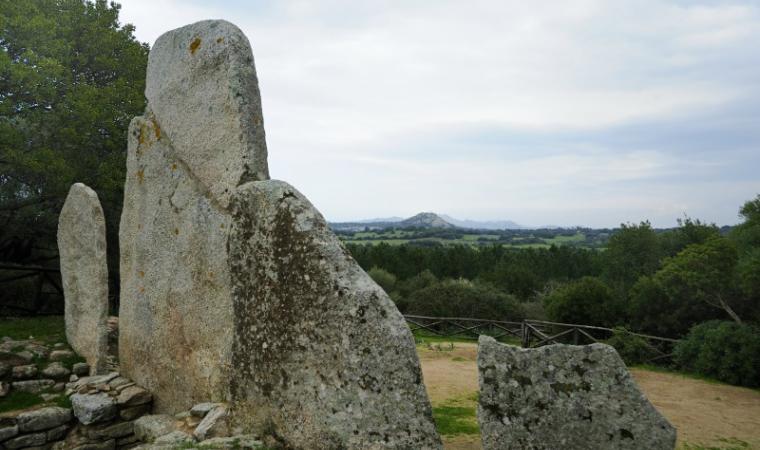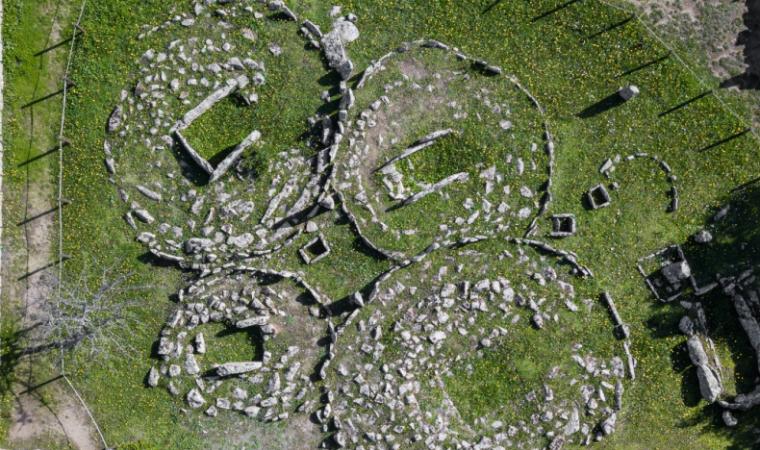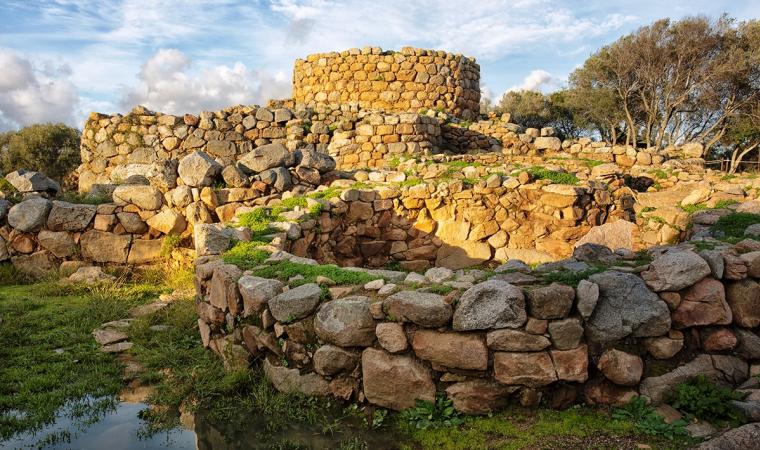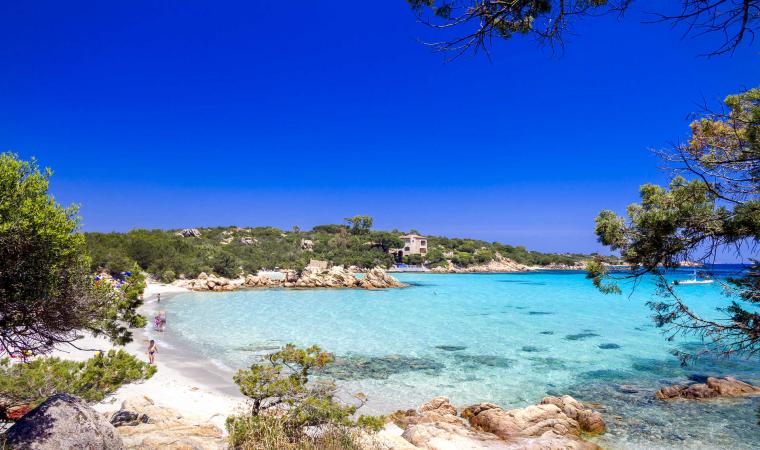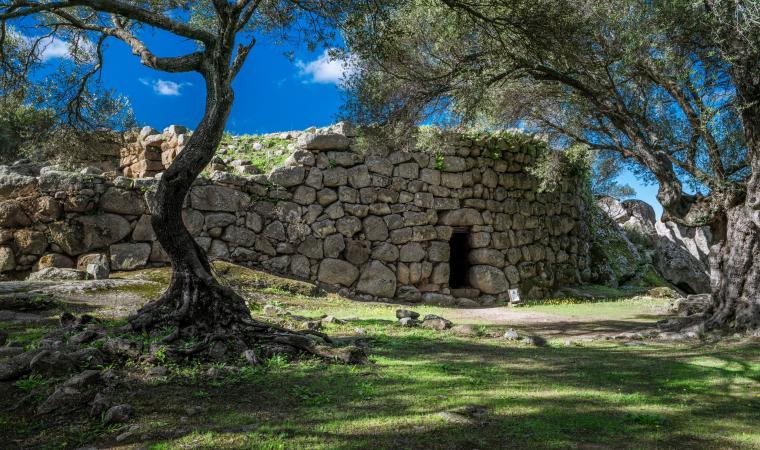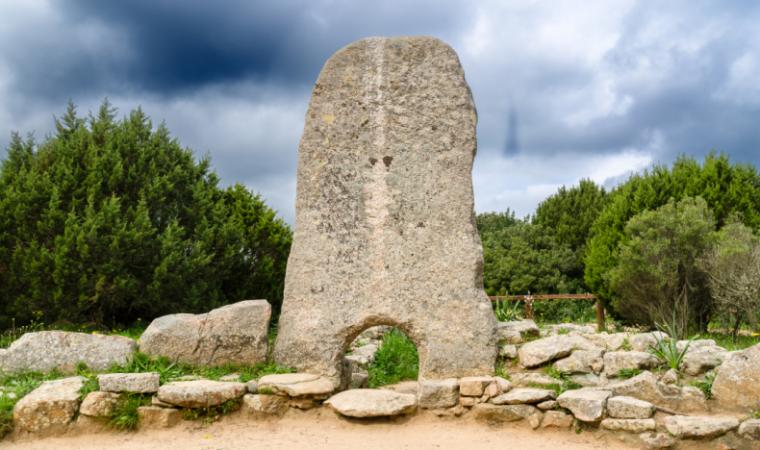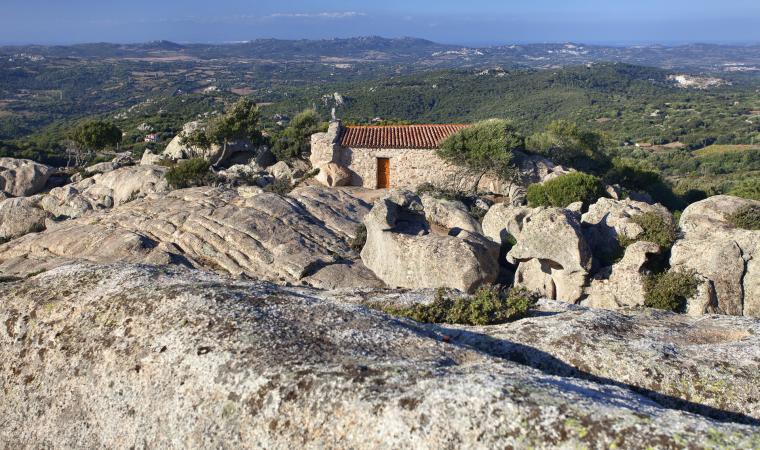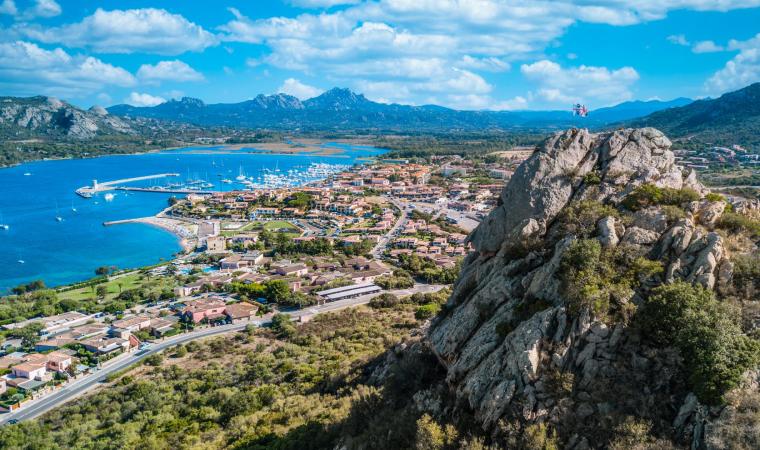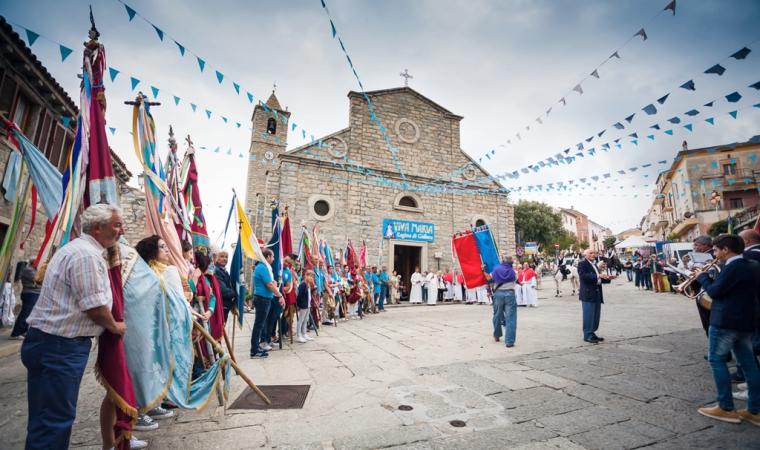Its size suggests not only a need to host many burials but also an intent to declare status and dominance over the surrounding landscape. And it does more than impress—studying this tomb has led to two important discoveries about Bronze Age funerary culture. Li Lolghi is considered one of the most important, majestic, and best-preserved Giants’ Tombs, not just in Gallura but in all of Sardinia. It stands in the territory of Arzachena, around seven kilometers west of the town. Like most Nuragic tombs in the north-central part of the island, it features a central stele with a rounded top, pierced at the base by an arched doorway. Extending from each side of the stele is a wide exedra formed by fourteen granite slabs set upright in the ground, gradually decreasing in size toward the outer edges.
Its sheer scale is immediately striking: the distance from the center of the exedra to the far end of the mound measures 27 meters. The stele itself is just under four meters tall and nearly two and a half meters wide, with a semi-elliptical shape and a decorative flat-relief border. The first of the tomb’s “secrets” lies in its chambers: not one but two burial spaces, built in different periods. The far end is the oldest part, a gallery tomb roughly four meters long, built with orthostatic slabs and a granite-paved floor, slightly raised above the newer burial corridor. When the tomb was expanded, the stele, exedra, and rear chamber were added. Between the two sections, you’ll spot another unique detail: a horizontal slab that might have served as a niche for offerings to the dead.
Artifacts found in the older chamber date it to the Early Bronze Age (19th–17th century BCE), while the newer section belongs to the Middle Bronze Age (17th–14th century BCE). As for what took place here, the second key discovery at Li Lolghi comes from the area in front of the exedra. Fragments of pottery—likely once used for food and drink—suggest that Nuragic people held ritual meals in honor of the dead, right beside the tombs where their ancestors rested.
Your archaeological journey through Arzachena continues about a kilometer and a half to the west, where you’ll travel even further back in time—two thousand years earlier, to be exact. The necropolis of Li Muri awaits, with four tombs built using upright slabs of stone. These enclosed gallery graves were once covered by mounds, forming small hills. They were likely the final resting places of prominent community members.
Here’s a fun fact: the names of the two sites may have been swapped at some point in the past. In the Gallurese dialect, lolga means ring—so it’s possible that li lolghi originally referred to the circular tombs of the Neolithic necropolis.


